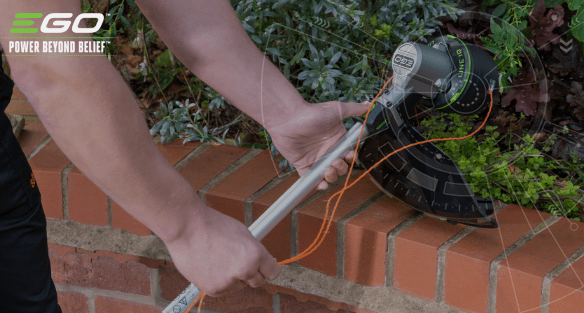Overgrown gardens, dispersing seeds from old seed heads, and clearing around the base of fruit trees for mulching. These are three ways your battery grass trimmer or brush cutter can be used in preparedness for spring.
Getting ahead on these tasks now will ensure you are not playing catch-up when the growing season comes around.
1. Removing seed heads for reseeding
Having a wildflower patch is a great addition to your garden for a number of reasons. From attracting beneficial insects, to providing pollen and nectar for pollinators. Now that the flower heads have turned to seed heads and been left over winter for birds and other wildlife to gorge on, it is time to reseed the meadow.
When you begin, make sure you start at the furthest point and then work backwards. This is to avoid walking on the seeds which could get stuck into your muddy boots and then get spread to wherever else you walk.
To reseed the meadow naturally:
- Using a grass trimmer or brush cutter, cut the stems of the dead wild flowers to one-third tall so the seed heads fall to the ground
- With the collection bag removed, mow the area carefully with a lawn mower - this will break up any whole seed heads as well as help to distribute the seeds throughout the area
- Rake the area to ensure full coverage with the mowed wild flowers
A sprinkle of rain and the arrival of some warmer air is all that’s now needed to revive your wild flower meadow.
2. Strim around the base of fruit trees
Using your grass trimmer or brush cutter to strim around the base of fruit trees will:
- Provide natural, slow-release fertiliser from the grass and weed clippings left around the base
- Limit the growth of grass and weeds which steal nutrients from the soil which the tree is benefiting from
- Allow room for wood chip to be spread around the base, which will suppress weeds and retain moisture in the soil
3. Overhaul your overgrown garden
Areas of your garden that have become overgrown can be tackled with a grass trimmer and electric brush cutter. Grassier areas that have become overgrown with weeds such as nettles and docks can be tackled with a cordless grass trimmer. Areas where more sturdy plants have taken hold can be dealt with by using an electric brush cutter.
Once you have cleared the area, you have two options:
Option 1 is to dig the organic debris into the soil, where it will naturally decompose and provide a source of nutrients.
Option 2 is to remove the debris from the garden and compost it on your compost heap.
Be mindful though that if there are any seeds left on the plants, these will regrow either in situ or in your compost heap. If this is the case, then burn or dispose of them away from the garden, where they won’t contaminate the soil with weeds.
Maintaining your tool after use
So long as your grass trimmer or brush cutter has been properly maintained, it should be able to handle any of the above tasks with ease. If you’re unsure on how to maintain your tool properly, or how to install trimmer line, then check out any of the manuals on our products pages. You can also visit our EGO news page to find out more tips and tricks.
